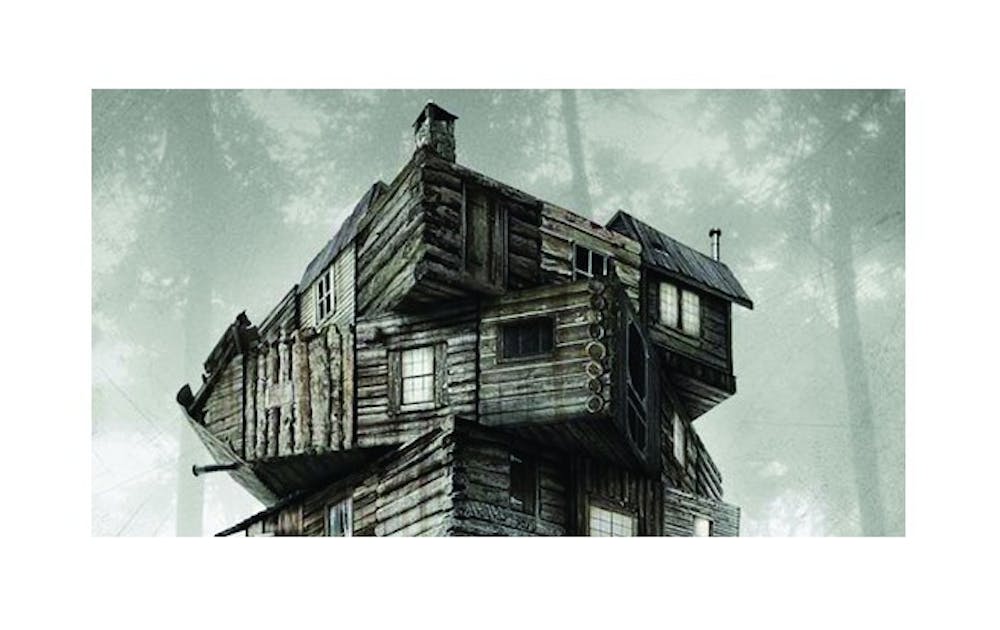There was apparently some major cultural event in Durham this past weekend, but I was like, nah, bag that, I’m going to see The Cabin in the Woods.
I know many Recess readers are suffering from compassion fatigue after 10+ hours of hope-inflating documentaries, but if there are any rowdy gore lovers like me who want to pilot the Jeep Wrangler Rubicon® to the theater, shotgun a taurine beverage and bust ass for an hour and a half, Cabin is destination delimbification, Bronan Farrow.
The Cabin in the Woods is a conspiratorial spoof on all the pulpy tropes of the horror genre. The film was created by veteran writer/producers Joss Whedon and Drew Goddard. The two also worked together Buffy the Vampire Slayer, and more recently, on the dead serious monster movie Cloverfield. Conversely, Cabin proceeds as if Whedon and Goddard turned a weekend of huffing nitrous oxide and making fun of their old material into a winning script.
The teenage pack features all the classic stereotypes: the letterman-jacketed alpha male, his blonde bimbo girlfriend (who is also, yep, pre-med), the pothead philosopher, the innocent and sneaky sexy non-blonde and the bespectacled, reasonable good guy. (It’s not worth recounting their names—the archetypes illustrate it better.) The gang sets off in a camper to a remote cabin, packing a keg and a bong and hoping for random outdoor sex. They get all that, but they still gon’ die.
But it’s the framing metaplot that makes Cabin so immensely entertaining. The death journey is carefully orchestrated by two middle-aged men (Bradley Whitford and Richard Jenkins) from a “top secret government bunker” that recalls Men in Black and Office Space. They organize an office pool on the proceedings, award a cash prize when the kids ‘choose’ death by hillbilly zombies and crack celebratory beers with the accounting department. It’s semi-serious business, though: without giving too much away, the bloody fates of the five kids have something to do with saving humanity from destruction. Like if Lost (which Goddard helped write) had swerved into a massive, self-aware farce (note: it did).
There is much that is entertaining about Cabin: when things go haywire and the system breaks down, you get to see every horror creature imaginable get their slaughter on—cobras, dollfaced freaks, Leatherface, etc. There is a high tide of blood and a sacrificial SWAT team. Of course, there are limits to meta-horror. A sequel to Cabin would inevitably seem as trite as the tropes it ridicules. It is, however, a welcome reprieve from torture-porn like the Saw enterprise and silly found footage films like Paranormal Activity. Cabin won’t derail slasher films, nor should it. But it’s nice to take a moment to laugh along with Whedon and Goddard at the genre’s persistent absurdity.
Get The Chronicle straight to your inbox
Signup for our weekly newsletter. Cancel at any time.

